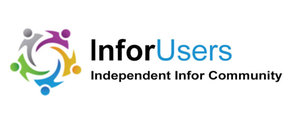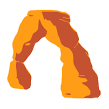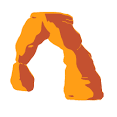The Problem: Remote Patient Monitoring Needs Fewer Devices to Improve Care
COVID-19 exposed the need to provide a new level of remote patient monitoring (RPM). The ability to continually monitor patients with chronic or acute care needs in their homes became a front-and-center requirement for healthcare providers. As providers dived into telehealth programs to create virtual care encounters with their patients, a key component of many encounters was missing—the ability to capture accurate and real-time vital sign data from the patient. Few telehealth solutions had the ability or were effectively connected to RPM devices to create a virtual encounter that was as effective as an in-person encounter.
Part of the RPM challenge is creating patient monitoring devices that are easily connected to WiFi or cellular networks (e.g., 4G LTE or 5G). These devices also need intuitive design that accommodates ease of use for the patients. Many RPM products have separate monitoring devices that require different applications to the patient’s body as well as different operating procedures. In many cases, the medical devices need to be connected to a special communication hub the RPM vendor requires for capturing the patient’s data. Many of the RPM medical device components are proprietary to the vendor, which increases the cost for supplying, supporting, and replacing these components for healthcare organizations. These solutions will expose healthcare organizations to eventual technological obsolescence as new multimodal monitoring solutions are delivered on smartphones.
The Solution: Smartphones with Multimodal Monitoring Capabilities
Smartphone RPM solutions present a new standard that will drive down acquisition, deployment, support, and replacement costs. An Israeli solution called MyHomeDoc facilitates nine tests with a single RPM device connected to a smartphone, including a stethoscope check for lungs and heart, otoscopy for the ear, analysis of pulse via oximeter, and a thermometer for body temperature. Smartwatches and smartphones appear to be in a race to determine which device will enable the monitoring and collection of the most complete set of consumer and patient data. Both will be successful in capturing data that can be used by providers to enhance patient care. But the smartphones have a significant advantage—people across all socioeconomic tiers are likely to have a smartphone, while middle- to upper-class citizens are more likely to have both a smartphone and a smartwatch.
Another advantage for smartphones is the form factor they possess to improve the ease of interpretation of the data that medical monitoring applications will supply. While smartwatches can also serve as phones and exchange text messages and emails, their form factor is small and will require significant data presentation design to be effectively used by most people. Older citizens will require larger form factors to interact with the monitoring data and potential real-time telehealth exchanges effectively and easily with physicians. The potential to successfully hold conference calls between patients, family members, and physicians relative to monitoring data and alerts is also better facilitated by smartphones.
The Justification: Evolving Multimodal RPM Solutions with Smartphone Integration
Healthcare organizations moving to value-based care will focus their resources on managing high-risk patient populations to improve outcomes while driving down care costs. The ability to implement RPM services on smartphones with multimodal monitoring devices will likely reduce the deployment and monitoring costs of these services. RPM solutions certified by app stores, and likely the FDA, will improve the ability to deploy these services in a cost-effective manner that also improves patient adoption and compliance. Smartphone RPM solutions may also create a more effective approach for public health organizations to provide improved care to lower-income citizens.
One thing is certain: legacy RPM solutions with multiple proprietary devices and architectures are headed for obsolescence.
The Players: Early Emerging Smartphone RPM Vendors Will Disrupt the RPM Market
Smartphone-enabled RPM solutions using multimodality monitoring devices are immature and early entrants to the market. Examples below range from one RPM monitoring device to three devices.
- MyHomeDoc — Israeli and US-based company with recent FDA approval
- biofourmis — Uses a wearable device connected to a smartphone for real-time monitoring and advanced analytics
- BABYSCRIPTS — Three-tiered approach to virtual maternity care
Success Factors
- Smartphone/multimodal device solutions should be prototyped with high-risk patient populations that will benefit from designs that facilitate adoption and use (e.g., elderly populations or rural populations where cellular networks may be the only available communication approach).
- The total cost of ownership of smartphone/multimodal device solutions should be compared to existing RPM solutions to determine risk replacement benchmarks.
- Smartphone/multimodal device solutions should be compliant with both iOS and Android app store certifications, and multimodal devices must be FDA compliant.
Summary
RPM is becoming a medical necessity for providers as we enter a new care delivery model for value-based care. The ability to virtually monitor high-risk patients with acute or chronic care conditions will impact provider reimbursement, physician satisfaction (i.e., if RPM is effectively integrated into telehealth and EHR applications), and patient satisfaction. RPM legacy solutions are likely to use a variety of patient monitoring devices, many of which are proprietary to the vendor. Implementing, supporting, and maintaining legacy RPM solutions will be more expensive than using smartphones as data managers with emerging multimodal RPM device solutions.
Smartphone multimodal RPM device solutions will enable a broader range of patient population socioeconomic applications. Most US citizens are likely to have smartphones no matter what their income levels are. Smartphones provide a communication and information exchange forum that can further supplement patient-provider interactions.
The ability of smartphones to supplement multimodal monitoring services with voice biomarkers and the video-based vital signs monitoring will catalyze the value of smartphones for RPM solutions.
Photo credit: sdecoret, Adobe Stock


